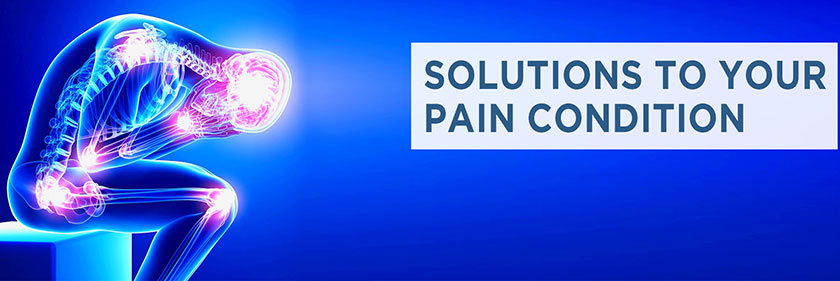Understanding the Role of a Pain Clinic in Long-Term Pain Relief

Chronic pain is a complex and often debilitating condition that affects millions of people worldwide. It can result from a variety of factors such as injury, surgery, diseases like arthritis, or conditions like fibromyalgia. While over-the-counter pain medications and lifestyle adjustments can provide some relief, many individuals find that these methods do not offer lasting or sufficient pain management. This is where a pain clinic comes in.
Pain clinics are specialized healthcare facilities designed to offer comprehensive and individualized pain management strategies. They take a multidisciplinary approach, bringing together specialists from different medical fields to develop a holistic treatment plan. The aim of a pain clinic is to help individuals manage their chronic pain effectively, reduce reliance on medications, and improve overall quality of life.
In this article, we’ll explore the role of a pain clinic in long-term pain relief and why seeking care at one may be the best choice for individuals struggling with chronic pain.
1. The Multidisciplinary Approach to Pain Management
A pain clinic is more than just a place where you go to receive pain-relieving medications. It is a specialized center where multiple healthcare professionals work together to help you manage and treat your pain from various angles. This approach is referred to as multidisciplinary care, which combines expertise from different areas of healthcare to develop a comprehensive treatment plan.
At a pain clinic, the team typically includes:
- Pain management physicians: These specialists are medical doctors who focus on diagnosing and treating pain. They are trained to handle complex pain conditions and will oversee your treatment plan, which may involve a combination of medications, injections, or advanced therapies.
- Physical therapists: Physical therapists help you strengthen muscles, improve flexibility, and restore function to areas affected by pain. They will develop exercise routines and physical rehabilitation strategies tailored to your specific condition, which can prevent future pain flare-ups and improve mobility.
- Psychologists: Chronic pain often has psychological effects, leading to feelings of anxiety, depression, and frustration. Pain clinics may include psychologists or therapists who offer cognitive-behavioral therapy (CBT), which is an evidence-based approach to managing the emotional impact of chronic pain.
- Occupational therapists: These professionals help you adapt to pain by suggesting techniques to make daily activities easier. Whether it’s modifying your workspace, adjusting posture, or learning to conserve energy, occupational therapists empower you to live as normally as possible despite your pain.
- Nurse practitioners and support staff: Pain clinics also have nurses who assist with medication management, patient education, and follow-up care. They ensure you have the tools and knowledge needed to manage pain at home.
By bringing together specialists from different fields, a pain clinic can offer personalized care that addresses not only the physical aspects of your pain but also its emotional and psychological impacts.
2. Comprehensive Diagnosis and Personalized Treatment Plans
One of the main benefits of visiting a pain clinic is the thorough assessment and personalized treatment plans. Chronic pain is highly individual and can vary greatly from person to person, so a “one-size-fits-all” approach often doesn’t work. Pain clinics take the time to understand the root causes of your pain and create a customized plan to treat it effectively.
Here’s what you can expect during the diagnostic and treatment planning process at a pain clinic:
- Detailed medical evaluation: The first step in your journey at a pain clinic is a comprehensive evaluation. Your doctor will ask about your medical history, the onset of your pain, its severity, and any factors that exacerbate or alleviate it. This information helps the medical team understand your condition and how it impacts your life.
- Physical examination: The doctor may perform a physical examination to assess your posture, flexibility, strength, and areas of tenderness or discomfort. Based on the findings, they may recommend further diagnostic tests, such as X-rays, MRIs, or CT scans, to identify underlying issues such as joint degeneration, nerve damage, or spinal abnormalities.
- Individualized treatment plan: Based on the diagnosis, your healthcare team will create a treatment plan that addresses your specific needs. Your plan may include a combination of treatments such as medications, physical therapy, psychological therapy, lifestyle changes, and invasive procedures. This tailored approach ensures you get the best possible chance of long-term pain relief.
The goal of a personalized treatment plan is to target the underlying causes of pain, provide immediate relief, and prevent future flare-ups. Pain clinics often offer treatments that go beyond traditional pain management methods and are more effective in addressing the unique needs of each patient.
3. Advanced Pain Management Techniques and Therapies
Pain clinics have access to a wide range of advanced pain management techniques that are not commonly available in a regular primary care setting. These treatments are designed to provide targeted pain relief, either by addressing the source of the pain directly or by modifying the way your body processes pain signals.
Here are some of the advanced treatments and therapies you may encounter at a pain clinic:
- Epidural steroid injections: For individuals with chronic back or neck pain, epidural steroid injections deliver steroids and anesthetics directly to the spinal cord’s epidural space. These injections can reduce inflammation and alleviate pain caused by conditions such as sciatica, herniated discs, or spinal stenosis.
- Nerve blocks: In cases of nerve-related pain, nerve blocks can be used to interrupt pain signals. These blocks are performed by injecting anesthetic or anti-inflammatory medication around specific nerves to provide targeted relief from conditions such as nerve impingement or post-surgical pain.
- Radiofrequency ablation (RFA): RFA involves using heat generated from radio waves to destroy nerve tissue that transmits pain signals. This procedure is particularly helpful for conditions like chronic arthritis or low back pain and can provide long-term relief.
- Spinal cord stimulation (SCS): For patients suffering from severe, debilitating pain that has not responded to other treatments, spinal cord stimulation may be recommended. This minimally invasive procedure involves implanting a small device near the spinal cord that delivers electrical impulses to block pain signals, offering significant relief for chronic back or leg pain.
- Regenerative medicine treatments: Some pain clinics offer stem cell therapy or platelet-rich plasma (PRP) injections, which use the body’s own cells to promote healing in injured tissues. These therapies can be particularly effective for joint pain, tendon injuries, and degenerative conditions.
These advanced treatments are often used when conventional pain relief methods (like medications or physical therapy) have not been effective. They target the root cause of pain and offer longer-lasting relief than traditional approaches.
4. Psychological Support for Chronic Pain Management
Living with chronic pain is not only physically exhausting but can also take a heavy emotional toll. Many people with chronic pain experience depression, anxiety, and stress, all of which can worsen the perception of pain. A pain clinic understands that treating the emotional aspects of pain is just as important as treating the physical symptoms.
At a pain clinic, psychological support may include:
- Cognitive-behavioral therapy (CBT): CBT is a well-established therapy that helps patients identify negative thought patterns and replace them with more positive, realistic thoughts. For chronic pain patients, CBT can help manage the emotional distress associated with pain and develop coping strategies.
- Mindfulness and relaxation techniques: Pain clinics often offer mindfulness practices, such as meditation, guided imagery, and breathing exercises, which help patients manage pain and reduce stress by focusing on the present moment and promoting relaxation.
- Support groups: Many pain clinics offer group therapy or support groups where individuals with similar conditions can share their experiences and gain support from others who understand what they are going through. This can help reduce feelings of isolation and provide a sense of community.
Addressing the psychological aspects of chronic pain is critical for improving quality of life and preventing emotional distress from exacerbating physical pain.
5. Ongoing Monitoring and Adjustments to Treatment Plans
Managing chronic pain is an ongoing process that requires continuous monitoring and adjustments. Pain clinics ensure that patients receive long-term care and that their treatment plans are regularly evaluated and updated as needed.
Some of the ongoing support and monitoring you can expect at a pain clinic include:
- Regular follow-up appointments: Pain clinics typically schedule follow-up appointments to check on your progress and determine how well the treatment plan is working. This gives the medical team an opportunity to adjust your plan if needed.
- Rehabilitation and physical therapy: Many patients will continue physical therapy or rehabilitation throughout their treatment to strengthen muscles, improve mobility, and prevent pain from recurring.
- Medication management: As pain levels change over time, your medications may need to be adjusted. The clinic will work with you to ensure that your medication regimen remains effective without leading to dependency or adverse side effects.
- Lifestyle modifications: Pain clinics also provide guidance on lifestyle changes that can help manage pain, such as incorporating regular exercise, improving sleep habits, and adopting a healthy diet.
Ongoing care ensures that your treatment plan evolves alongside your condition, giving you the best chance for sustained pain relief.
Conclusion: The Path to Long-Term Pain Relief
Pain clinics offer a comprehensive and individualized approach to pain management, providing specialized care that goes beyond traditional pain management techniques. By focusing on both the physical and emotional aspects of chronic pain, pain clinics offer a holistic treatment plan designed to provide long-term relief and improve your overall quality of life.
If you are struggling with chronic pain and have not found adequate relief through conventional methods, seeking care at a pain clinic could be the next step on your journey to better health. With personalized care, advanced treatments, and ongoing support, a pain clinic can help you take control of your pain and achieve a higher level of well-being.







